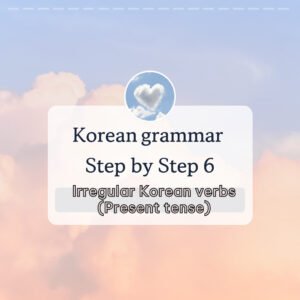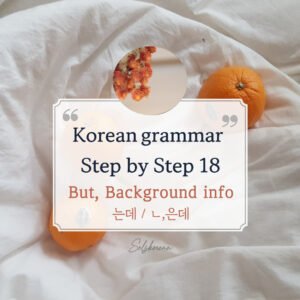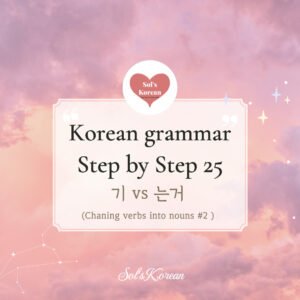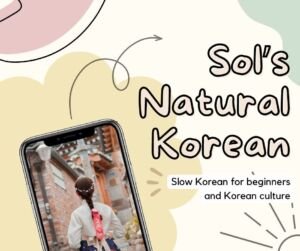고 있어요/ 중 이에요 ongoing present tense (-ing form)
Hello, language learners! Welcome back to our journey of mastering Korean.
Today, let’s delve into two important concepts in Korean grammar: 고 있다(있어요) and -중 이다(이에요.)
These expressions are used to describe ongoing actions or states in the present tense.
In English, this concept is equivalent to the “-ing” form, such as “I am eating” or “I am studying.”
In Korean, there are two ways to express this, so let’s explore each one!
Let’s dive in!
Part 1,
Let’s grasp the concept of grammar
Both ‘-고 있다’ and ‘-중 이다’ are used to indicate that an action is currently in progress or that a state continues in the present moment.
고 있다 / 중 이다 are “-ing” form in English.
They both indicate that an action is currently in progress.
고 있다 is conjugated as 고 있어요 (most common, fairly formal)
고 있습니다(very polite) or 고 있어(informal)
*Let’s recall the conjugation of the verb 있다. Remember? This verb means “to be” or “to have.”
By simply adding 고 in front of it, you get a completely different grammar point!
ex) 먹다 : We drop ‘다’, from the verb stem(먹), we add 고 있어요.
먹고 있어요. / 먹고 있습니다. / 먹고 있어.
는 중이다 is conjugated as 는 중이에요 (most common, fairly formal)
는 중입니다(very polite) or 는 중이야(informal)
* Let’s recall the conjugation of the verb 이다. Remember? This verb is like “am,” “are,” or “is.”
By simply adding 는 중 to the verb stem, you get a completely different grammar point!
ex) 먹다 : We drop ‘다’, from the verb stem(먹), we add 는 중이에요.
먹는 중이에요. / 먹는 중입니다. / 먹는 중이야.
| 고 있다 | -ing, original form |
| 고 있어요 | most common, fairly formal |
| 고 있습니다 | very polite |
| 고 있어 | informal |
| 는 중이다 | -ing, original form |
| 는 중이에요 | most common, fairly formal |
| 는 중입니다 | very polite |
| 는 중이야 | informal |






